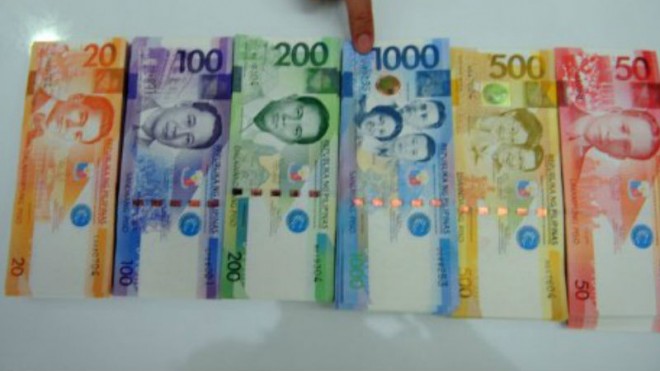SHOW me the color of your money. Is it P100 or P1,000?
If you sometimes mistake P1,000 for P100, you’re not alone.
To minimize confusion among the public, the central bank is set to slightly change the color of the ubiquitous P100 bill in the coming months and phase out older paper bill designs.
Mauve is the color of the new P100 bill that will begin circulating in the economy by January 2016, said Gov. Amando M. Tetangco Jr. of the Bangko Sentral ng Pilipinas (BSP).
Compared with the P100 bill’s current violet color, the new mauve bills will have more red undertones.
The current P100 bill, part of the New Generation Currency series first introduced in 2010, is officially listed as violet, while the P1,000 bill is blue.
The BSP hopes the change in color will be enough to help the public distinguish a P100 bill from a P1,000 bill.
Tetangco said the BSP had received several complaints from the public due to the similarity. Most complaints are of people who mistakenly hand over P1,000 bills when they meant to use the P100 one.
“Everything will be the same but the color. With this new one, you will really see the difference,” he told reporters.
The BSP has stopped printing bank notes sporting designs from 1985, which are headed for complete demonetization by 2017.
About 20 percent of all paper bills circulating in the country are of the P100 denomination. The most widely used type of bank note is the P20 bill, while the least used is the P200 bill, also the newest denomination.
Only about 2 percent of the cash in the Philippines is denominated in P200 bills, the BSP said last year.
The central bank has started scaling down its production of the P200 bill that most people often break into two P100 bills, Tetangco said.
The P200 bill was first produced amid the perceived demand for a denomination between P100 and P500. Tetangco said the BSP would continue to print P200 bills, albeit in reduced quantities.


